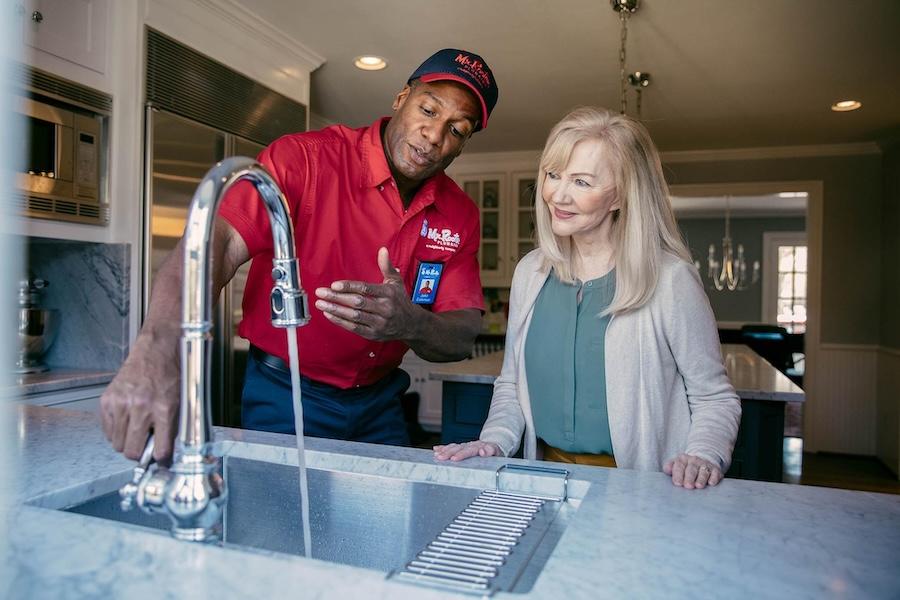Menu
Call This Sunday to Get $50 Off
Do You Need a Plumber in Dallas, TX? Call us Now to Get $50 OFF
4.8 / 5 Ratings based on 1384 reviews Great Plumbers, Great Reviews
Call This Sunday to Get $50 Off
A wobbly kitchen faucet handle or base can lead to water leaks, damaged fixtures, and higher repair bills. Thankfully, most loose faucets can be tightened without replacing the entire unit. Mr. Rooter Plumbing has worked with countless homeowners on these small but important repairs, and the process could be something you can tackle with the right tools and techniques. Keep reading to learn what steps to take.

Before you start tightening anything, you need to figure out what is actually loose. A faucet has several components, and not all wobbling comes from the same place. If you have a loose handle, the problem is probably a small screw hidden under a cap or cover. This screw holds the handle to the valve stem. If it loosens, the handle starts to feel shaky or unresponsive. For a loose base, the culprit is usually a retaining nut located underneath the sink. This nut holds the faucet assembly tight against the sink surface. Water use, temperature changes, and years of motion can slowly cause it to loosen. Take a close look at your faucet from above the sink and then underneath. A flashlight and a small mirror can help if space is tight. This first step will save you time and help you grab the right tool before you start.
Once you confirm the handle is the problem, the fix is usually quick. Most kitchen faucet handles have a small set screw located under a decorative cap or cover.
A loose base usually takes a bit more work because you’ll be working underneath the sink. This fix will require a basin wrench or an adjustable wrench.
Faucets can become loose for many reasons, including daily use, vibration, and gradual wear on parts. You can slow the process and keep your faucet secure longer with a few simple habits.
Tightening a loose kitchen faucet is a simple task, but there are times when calling a professional is the right choice. If you find corrosion, stripped screws, or a cracked base, a repair will require more than a quick tighten. In some cases, the valve or mounting hardware may need to be replaced. If you notice water seeping around the base or dripping from connections under the sink, the leak could damage your cabinetry or flooring. At that point, a qualified plumber can diagnose the cause and complete the job safely. A professional plumbing repair service also comes in handy if your faucet design is complicated or if the space under your sink is too cramped for easy access. They have the tools, experience, and replacement parts on hand to restore the faucet to like-new condition.
A loose kitchen faucet handle or base is a problem that can grow if ignored. If you’re dealing with severe damage, leaks, or stubborn hardware, calling in a professional will make sure the job is done right. Reach out to Mr. Rooter Plumbing for dependable faucet repair and other plumbing repair service needs. Our team can schedule your appointment today.
Your water heater probably isn't something you think about until it stops working or your…
Read More+Strange signs around the house can leave you guessing about what's going on behind the…
Read More+Basements stay dry because the main sump pump does its job, but some storms push…
Read More+A sink full of dishwasher water can be a shock, but it tells you something…
Read More+